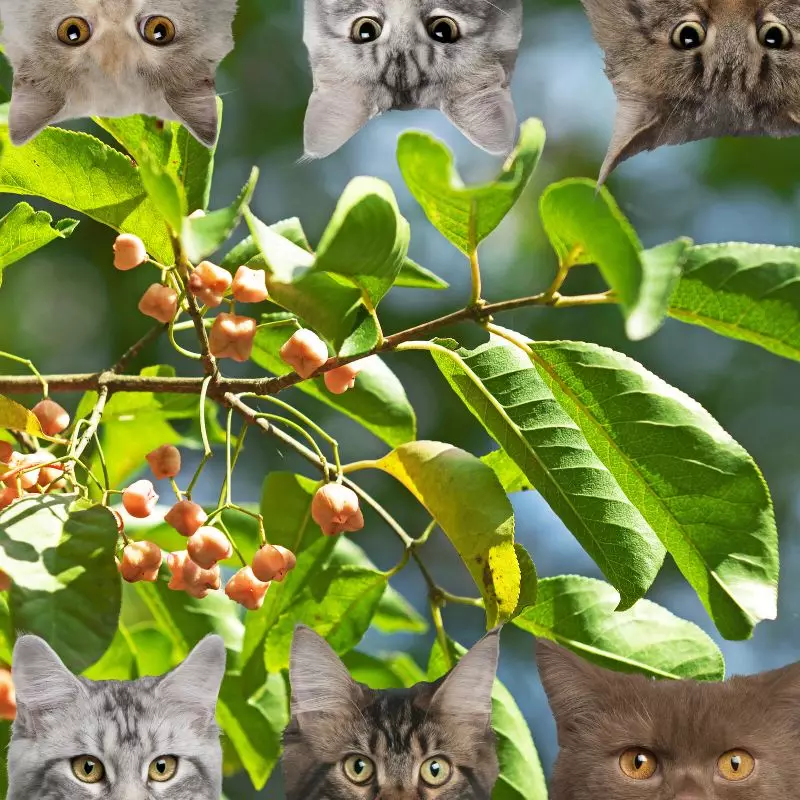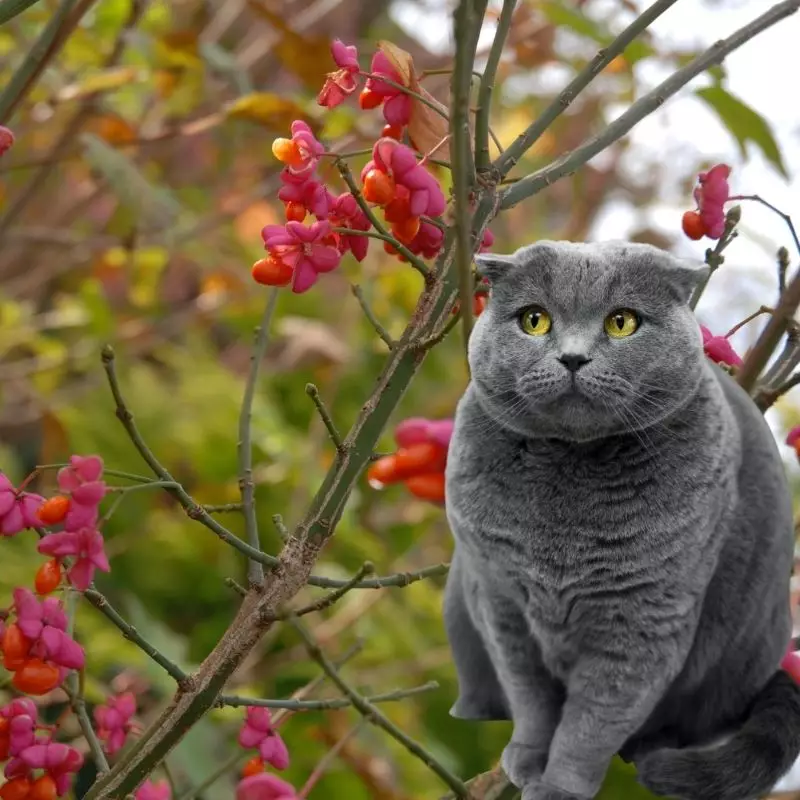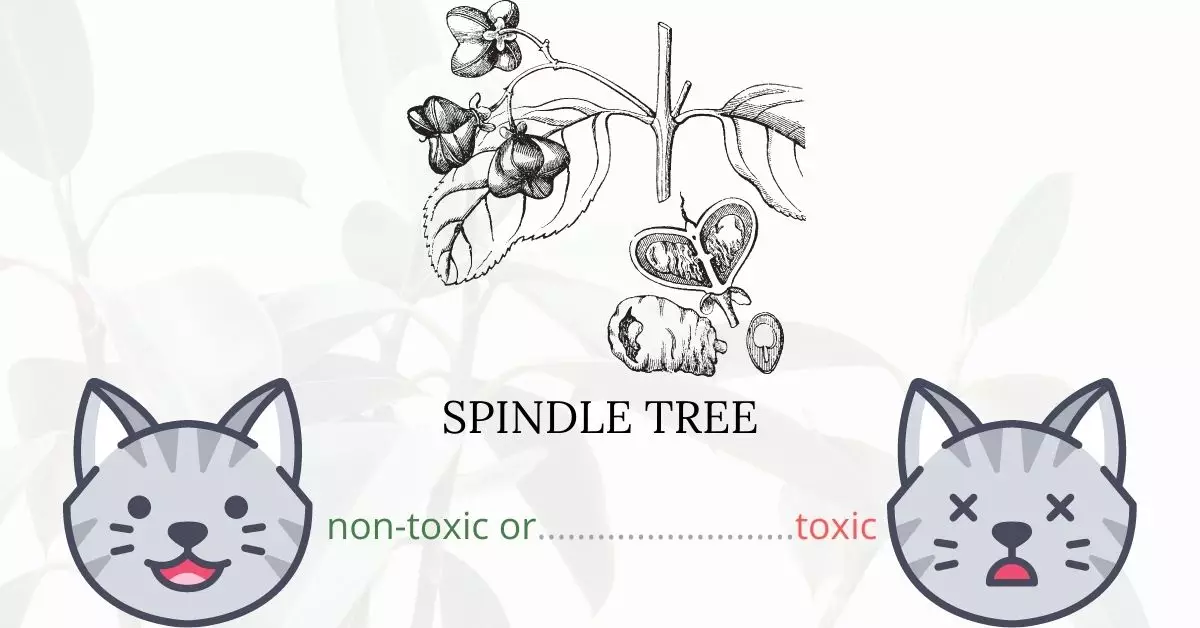Absolutely, Burning Bush, also commonly referred to as Wahoo and Spindle Tree, is toxic to cats due to its content of alkaloids and cardenolides. When ingested, cats may suffer from symptoms such as vomiting, diarrhea, constipation, hallucinations, and weakness. If you suspect your cat has consumed any part of the Burning Bush plant, seek veterinary attention immediately.
This article has been crafted in collaboration with a team of experienced DVMs (doctors of veterinary medicine). Their expertise ensures that we deliver accurate and up-to-date information about the potential risks associated with various plants, especially the Burning Bush in this context. Furthermore, our research has been supplemented by information from high-authority sources such as ASPCA and PetMD to ensure comprehensive coverage on the topic.
Clinical Signs of Burning Bush or Spindle Tree Poisoning in Cats

If your cat comes into contact with or ingests the Burning Bush plant, it’s crucial to understand the signs of poisoning that may develop. The toxic components in the plant are primarily alkaloids and cardenolides, which affect multiple systems in a cat’s body. Here’s a breakdown of the clinical signs and why they may occur:
- Abdominal Pain: Caused by the irritation of the stomach and intestines due to the alkaloids present in the plant.
- Coughing: A reaction to the plant’s irritants affecting the respiratory system.
- Hypersalivation: A result of oral irritation from chewing or biting the plant.
- Vomiting & Diarrhea: These occur due to gastrointestinal irritation. Constipation may sometimes follow diarrhea as the body tries to heal and normalize.
- Physical Weakness & Exhaustion: Due to the body’s generalized response to toxins and the energy spent trying to metabolize and expel them.
- Increased Body Temperature (Hyperthermia): A systemic inflammatory response to the poisoning.
- Shock: A severe and life-threatening drop in blood pressure caused by the body’s reaction to the toxins.
- Dilated Pupils: Indicative of neurological involvement or a sign of distress.
- Tremors: Caused by the toxins affecting the nervous system.
- Kidney and Liver Involvement: These organs are responsible for detoxifying and may be strained or directly damaged by the toxins, typically developing within 8 hours of ingestion.
- Breathing Difficulties: Resulting from respiratory system irritation or from the toxins affecting lung function.
- Bradycardia, Tachycardia, & Arrhythmia: Indications of the toxins affecting the heart, leading to slowed, elevated, or irregular heart rates respectively.
- Blindness: A rare but serious effect of toxins on the ocular nerves or a consequence of severe systemic toxicity.
- Unconsciousness & Coma: Due to severe neurological effects, with coma typically developing within 12 hours of ingestion.
- Cardiac Arrest: A catastrophic result of severe toxicity, especially when combined with other symptoms.
- Death: In severe cases, if the poisoning is left untreated or if treatment is not effective.
It’s paramount to recognize these signs early and seek veterinary intervention. Immediate treatment can make the difference in the outcome for your feline friend.
First Aid and Treatment of Burning Bush or Spindle Tree Poisoning in Cats

The veterinarian will restore lost fluids and electrolytes, induce vomiting if necessary, and inject activated charcoal in cases when only a little amount of the plant was swallowed. If necessary, the doctor may perform blood tests to assess your cat’s potassium and magnesium levels, as well as connect your cat to an electrocardiogram to monitor his heart activity. Other medication and laboratory tests may be administered by the vet depending on the severity of your cat’s condition.
Recovery from Burning Bush or Spindle Tree Poisoning in Cats

Your cat will totally recover as long as he or she received quick medical attention. Before you take your cat home after the veterinarian has discharged him, talk to him about your cat’s post-treatment needs. When you arrive home, follow the doctor’s instructions and make sure your cat has enough rest to recuperate quickly.
Prevention of Burning Bush or Spindle Tree Poisoning in Cats
Generally, the best way to prevent future cases of burning bush poisoning is to remove the said plant from your cat’s environment and limit his or her outdoor access to prevent contact with burning bush and other toxic plants in neighboring yards.
If you love plants but have cats at home, check out these lists:





